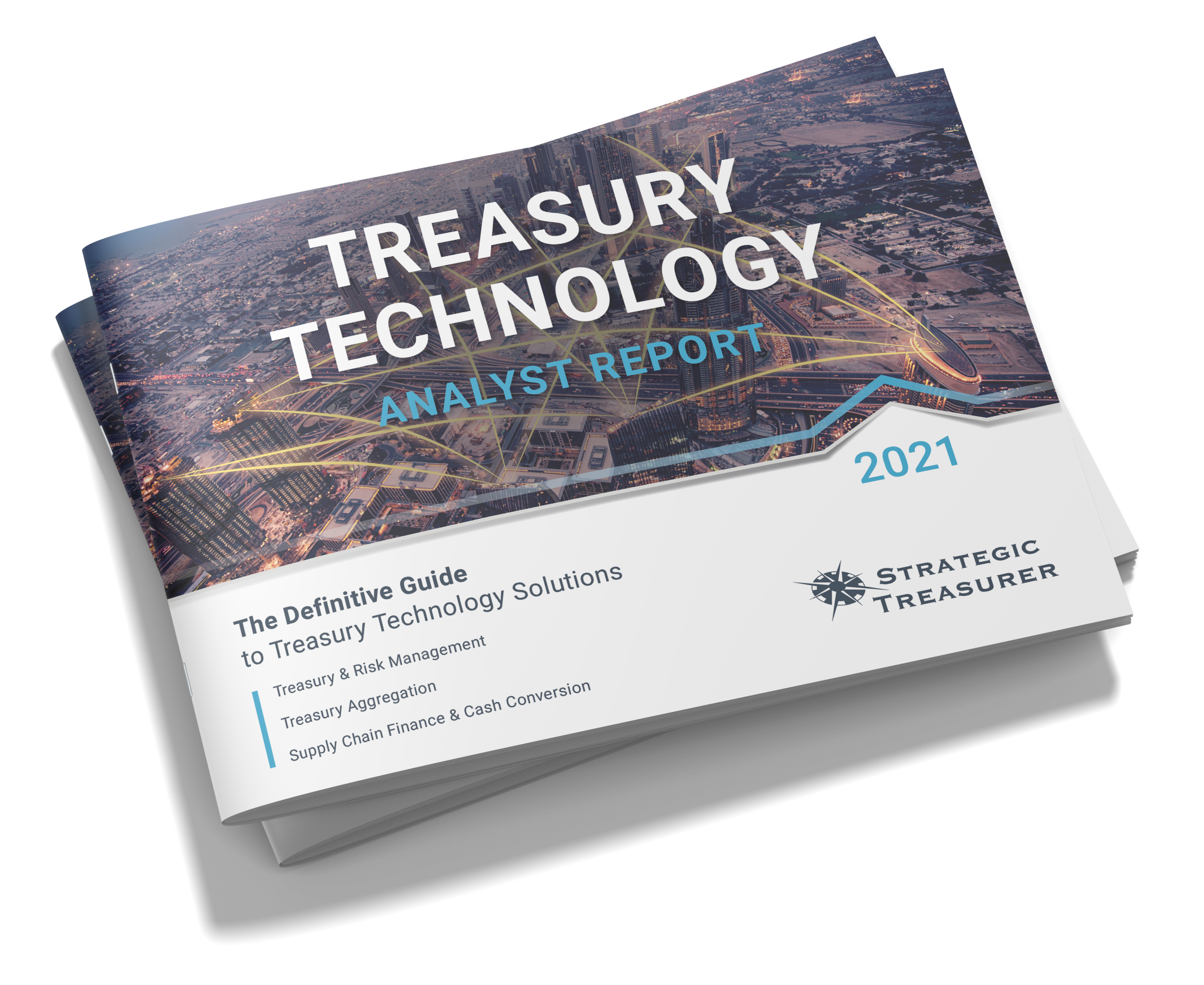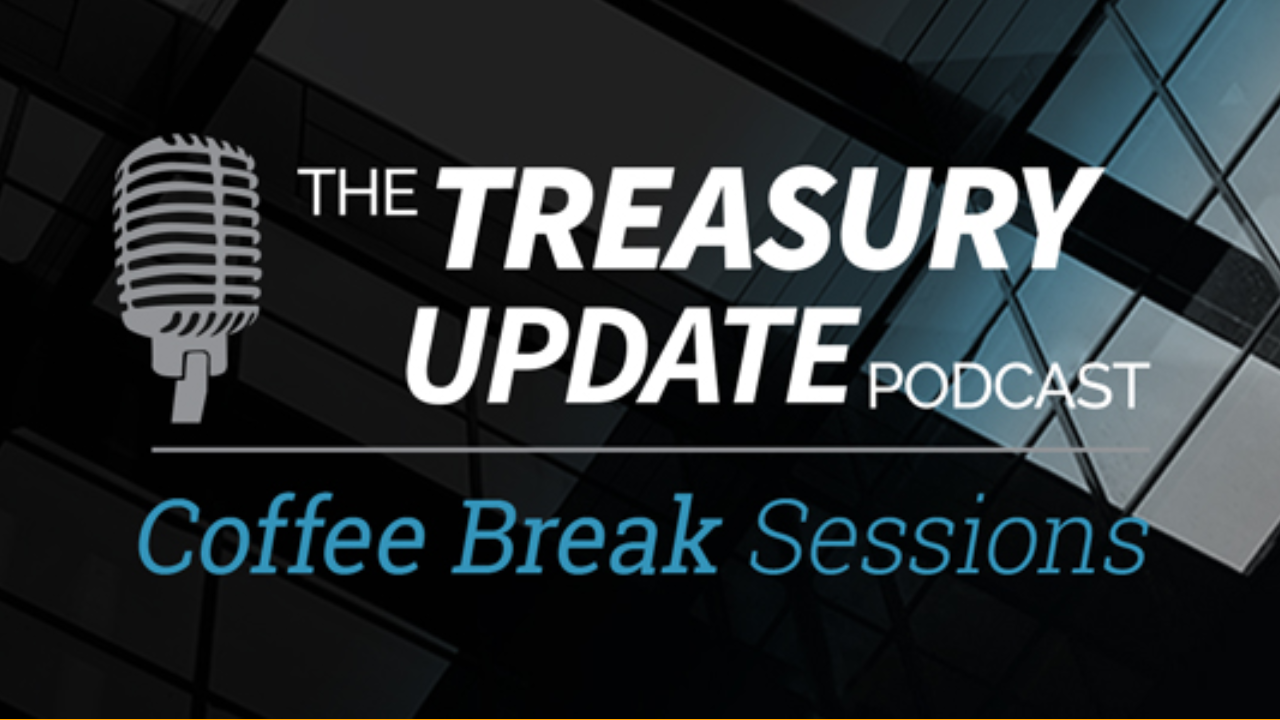
Session 64
Coffee Break Session:
What Is Reverse Factoring?
What is reverse factoring? Coffee Break Session Host Alexa Cook catches up with Strategic Treasurer’s Managing Partner, Craig Jeffery, to discuss reverse factoring. They discuss what reverse factoring is and how it can be leveraged. Listen in and learn a little bit about reverse factoring.
Host:
Alexa Cook, Strategic Treasurer


Speaker:
Craig Jeffery, Strategic Treasurer


Episode Transcription - (Coffee Break Session Series) - Episode 64 - What Is Reverse Factoring?
Alexa Cook 00:00
Hey guys, welcome to the Treasury Update Podcast Coffee Break Session, the show where we cover foundational treasury topics and questions in about the same amount of time it takes you to drink your coffee. This is your host Alexa and I’m joined today with Craig Jeffery, managing partner of Strategic Treasurer. Welcome back, Craig.
Craig Jeffery 00:23
Thank you, Alexa, it’s good to be here again.
Alexa Cook 00:26
So today, we are going to wrap up our supply chain vehicle conversations and we are going to be discussing reverse factoring. So Craig, can you start us off with just kind of what reverse factoring is?
Craig Jeffery 00:39
Sure, I was hoping we’d have more topics to discuss on the supply chain finance, because there’s a lot of other vehicles but, but you’re right, so in this series, reverse factoring. It’s an interesting name, because hopefully the last topic that we discussed was factoring. And we describe that as that was a supplier led approach. Factoring is related to accounts receivable, I have a receivable, I sell that receivable to a bank in this case or factor to them. So I get, let’s say, 98% of what’s due to me, but I get it earlier. And that’s the factoring. And so when you say reverse factoring, what’s been reversed here. And really, the difference here is that reverse factoring is from the payable side. And so that’s how it works from the other side that the payables entity is setting up this program. So maybe I should do a little bit of explaining there, suppliers, and buyers tend to be of different sizes, buyers tend to be larger, they may have better credit, they’re dealing with many, many suppliers who make smaller components. And so in the situation of strength and access to capital, oftentimes buyers are in a stronger position, they have a stronger balance sheet, banks will, you know, lend the money at more favorable rates. And so a buyer has access at lower cost of funds. And so they leverage their stronger credit position to get funding or secure funding on behalf of their suppliers. This is typically done from a bank, it could be done from a third party. And what this what this does is it also provides that delinking just like factoring does the delinking of when I pay for what I owe versus when you receive it, those don’t have to be on the same day I pay you and you receive it. Now you’re a supplier, you can take your money earlier, at a discount offered through the bank, and the bank offers that bridge between when I want to pay as a buyer, so maybe I’m paying in 60 days or 45 days, you may want to take that money sooner, but you don’t have the cloud at the bank to get into a factoring program or to have an asset backed facility. You know, your receivable is the asset that the bank, you know, views as collateral. So now I can offer rates that are more favorable, or through the program, you as a supplier can get better rates on the discounting that you want. Because we’re leveraging the overall buyers credit, the credit rating, which is higher, so I have access to cheaper funds, I make that available, I make some spread on that available through this program. And so now I’m paying in 60 days, you could take your money earlier, but you’re discounting is not as much as you would have to pay if you did it on your own. So liquidity strengthened with my supplier network, they have better access, it’s cheaper. Hopefully, that means they’re in a stronger position to supply. Maybe that means that their overall cost to do business with me is less, therefore I get better prices. So it’s it’s called reverse factoring. The buyer is the one who runs this program and makes it available to many of their suppliers who tend to be quite a bit smaller.
Alexa Cook 04:08
So is there than a limit on how many or how early you can receive that payment?
Craig Jeffery 04:15
Yeah, no, that’s a good question. So usually, there’s a mechanism where these have to be approved. So you have to have an efficient payables process that the goods are received, the services are delivered, these items are approved. And so in the system, now they’re ready for, you know, for payment. The limit would be maybe it’s some companies it might be four or five or six days others it might be 15. It depends on how efficient their processes you’re certainly not going to be able it would change it dramatically if you said oh, I’m going to pay you before I’m invoice because that’s now extending regular credit to the supplier versus this is just related to the trade activity paying the invoices so that’s really the fastest you could pay it is probably some Like, maybe 345 or six days might be the quickest, but you’re never going to jump through the pre approval from the invoice perspective.
Alexa Cook 05:12
Okay? So you can’t, you know, issue an invoice, say 60 days, and then the first day of that period, say, hey, I want my money today.
Craig Jeffery 05:19
So, unless the other process was so efficient they had received the goods and had it approved for the process. And we’re willing to let it go. That’s, that would be a really, really wonderful company, you could do it that fast. But yeah, typically 5, 6, 7 days tends to be about the fastest people can get those things received, approved and put through their side.
Alexa Cook 05:44
That’s great. So then what are some of the perceptions of reverse factoring?
Craig Jeffery 05:47
This reverse factoring is, is from a complexity of naming use, I don’t know that it’s the greatest, but from the perception of, hey, a big customer of which whom I supply now offers me financial flexibility, I don’t have to take it at a discount, I can take it later, at full value, or I can take it earlier. And this is better than these are better rates than I can secure from my local bank or the financial institutions that I deal with. This is very positive for the community. During COVID. It was interesting that there were some suppliers in the early days of COVID, when people weren’t paying very quickly that some suppliers sped up their process. And why did they do that they, well, they wanted their supply chain their partners to be in a good position. You know, if you’re, if your suppliers die from liquidity, or get too constrained, it harms them. And that will harm you certainly, eventually. And so some subjects took to pain earlier to create some strength among their suppliers. But the perceptions of reverse factoring are, are great, it’s flexible, you don’t have to take money earlier, at a discount. If you do, it’s a better rate than you would typically receive. So it’s quite positive from that front. And the other side on the offering is it’s a good business decision. Sometimes it has a, you can fund it yourself. Or you can use a third party supplier. So it’s a good use of capital. And it is a good way to strengthen your supplier network, which helps the company so tends to be pretty positive across the board.
Alexa Cook 07:27
Okay, great. So then just to do kind of a recap on this, what is reverse factoring. And I like how you mentioned that is an interesting name, maybe not the best name for it, but it’s really receivables lead approach done by the payable side. So it’s like I can pay you either receive it earlier at a discount or per our normal terms, you know, whenever you would send it to me, typically by Iran, and sometimes you’ll see smaller suppliers involved with that. Yeah, I didn’t know if there was anything else you wanted to add to that one.
Craig Jeffery 07:55
No, no, thanks for talking to me about that today.
07:59
Yeah. Thanks for joining us today, Craig. And thanks to all of our listeners for tuning in. Make sure you join us back every first and third Thursday of the month for a new episode. And as always, we love hearing from you whether it’s comments, questions or topic suggestions, so you can send us an email at podcast@strategictreasurer.com. Thanks again, Craig.
Announcer 08:20
This podcast is provided for informational purposes only, and statements made by Strategic Treasurer, LLC on this podcast are not intended as legal, business, consulting, or tax advice. For more information, visit and bookmark strategictreasurer.com.
- Treasury & Risk Management Systems
- Treasury Aggregators
- Supply Chain Finance & Cash Conversion Cycle




